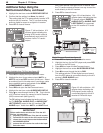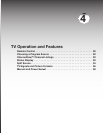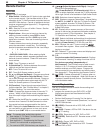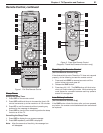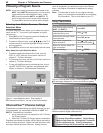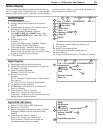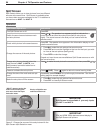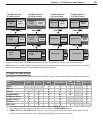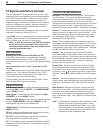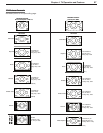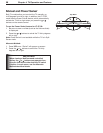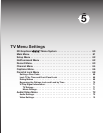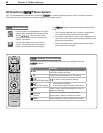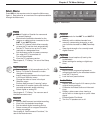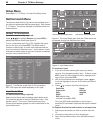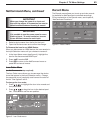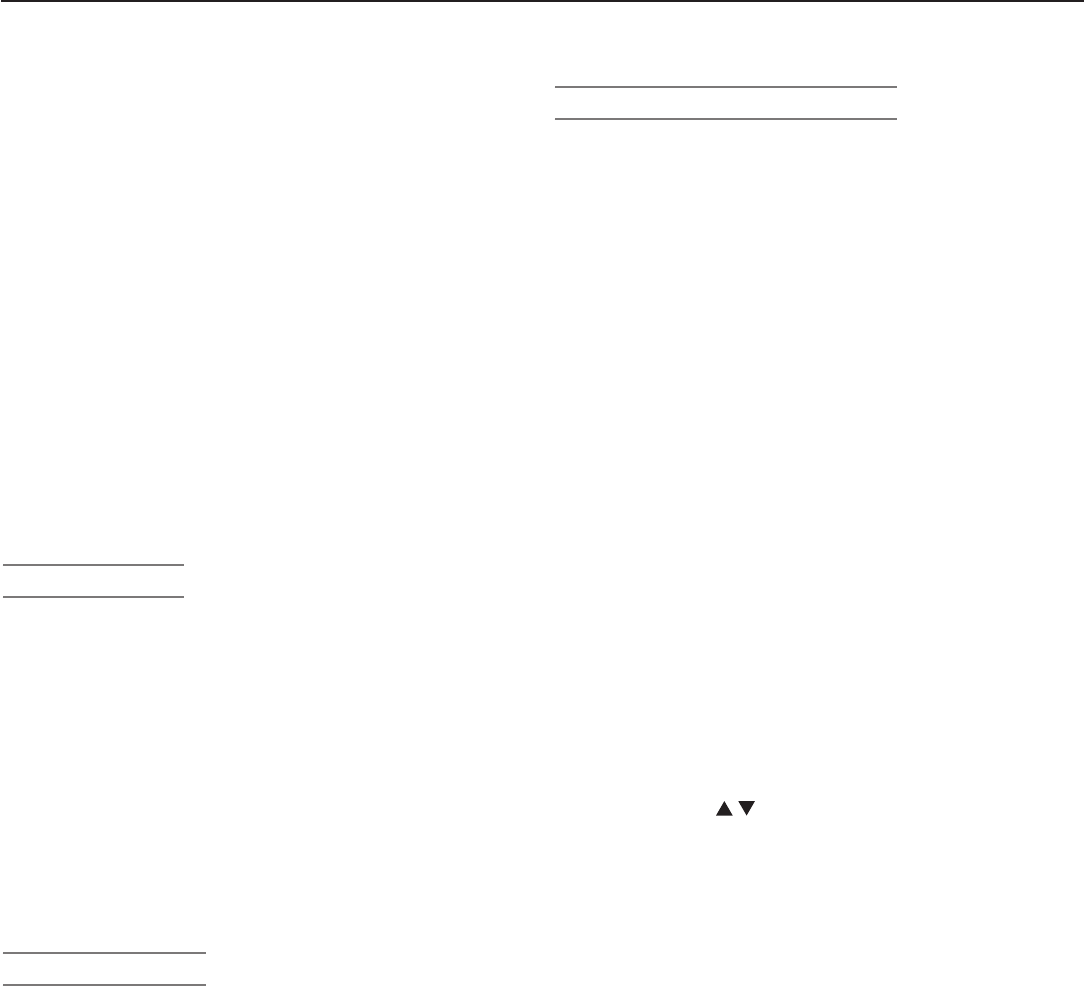
56 Chapter 4. TV Operation and Features
TV Signals and Picture Formats
This is a widescreen TV, also known as a 16:9 TV. This
shape reflects the new types of picture formats available
from HDTV and many DVDs. There are still many older
style narrow-screen picture formats (for example, 4:3
aspect ratio) you will encounter. While there is no perfect
solution for displaying a squarish, narrower image on a
wide screen, Mitsubishi offers several picture formats
from which you can choose.
Note: “Picture format” refers to the aspect ratio or the relative
size/shape of the picture, such as 16:9 or 4:3.
Press
FORMAT
on the TV remote control to cycle through the
available picture formats. The last-used format for each
device is used when you return to that device.
Note: In Split Screen mode, the
FORMAT
key changes
the picture size on both sides of the screen, but
the aspect ratio (relative height and width) of both
pictures remains the same.
DVD Definitions
Anamorphic (or Enhanced for WideScreen TV)
These DVDs are recorded in a special way to properly
show widescreen pictures on 16:9 TV sets using the
Standard format mode. This is the recommended viewing
choice.
Non-Anamorphic (or 4:3, 1:33:1, Letter Box, or Full
Screen)
These DVDs are recorded for use with traditionally shaped,
squarish TVs. They may be full screen (4:3 or 1:33:1)
which crops movies to fit the narrow TV, or letter box,
which adds black top and bottom bars.
This information may be listed on the DVD case. Some
DVDs support both types of recordings.
Signal Definitions
480i Signals: Traditional analog interlaced signals from
or through
ANT-1
and
2
,
INPUT 1
–
3
,
COMPONENT
inputs,
HDMI 1
and
2
.
480p Signals: Progressive-scan DVD signals on
COM-
PONENT
inputs and
HDMI 1
and
2
.
720p and 1080i Signals: High-definition signals received
through
COMPONENT
inputs and
HDMI 1
and
2
.
These signals are always 16:9 (widescreen).
1080p Signals: High-definition signals received through
HDMI 1
and
2.
SD 4:3: Standard-definition narrow-screen format signals
from digital channels and IEEE 1394 devices.
SD 16:9: Standard-definition widescreen format signals
from digital channels and IEEE 1394 devices.
HD: High-definition wide-screen format signals from digital
channels and IEEE-1394 devices. These signals are always
16:9 (widescreen).
TV Picture Format Definitions
Standard: This is the full-screen format. HDTV signals
use this format. This format is useful for displaying
Anamorphic DVDs that have 1.78:1 or 1.85:1 aspect ratios.
Anamorphic DVDs that have a 2.35:1 aspect ratio are
displayed with black bars at the top and bottom, but show
the entire picture correctly. Narrow (4:3) pictures are
stretched evenly from side to side. Available for all signals.
Expand: This enlarges the picture to fill the screen, crop-
ping off some of the image at the top and bottom. This is
useful for reducing the letter box top and bottom bars of
non-anamorphic DVD images. Available for 480i, 480p,
and digital SD 4:3 signals only.
Zoom: This enlarges the picture, cropping off some of
the image at each side and top and bottom. This is useful
for removing or reducing the black top and bottom bars
on anamorphic DVDs with a 2.35:1 aspect ratio. Available
for 480i and 480p and SD 4:3 signals only.
Stretch: This format stretches a narrow (4:3) picture
across the screen; there is less stretch in the center than
at the sides, however. This allows the entire narrow image
to be displayed across the screen with less distortion than
is seen in the Standard format. Available for 480i and
480p and SD 4:3 signals only.
Stretch Plus: Similar to stretch mode, but to minimize
distortions on the side, the picture is expanded to crop
off portions of the top and bottom. Except when display-
ing menus, press to adjust the position of the picture
vertically. Available for 480i and 480p and SD 4:3 signals
only.
Narrow: This format displays narrow (4:3) pictures in their
original shape, and adds stationary black side bars to fill
the screen. Available for 480i, 480p and SD 4:3 signals
only.
Wide Expand: Enlarges the picture, cropping some of
the image on both sides. This Expand format is useful to
remove or reduce black side bars added to narrow pic-
tures that are converted to 16:9 signals for digital broad-
cast. Available for 1080i, 720p, digital SD 16:9 and digital
HD signals.
Note: All high-definition channels send widescreen (16:9)
signals, but not all programming sent on these
channels was created for this format. As a result,
the broadcaster must convert such programming
for broadcast, and may stretch the picture or add
side bars to fill the widescreen area.



